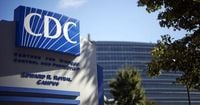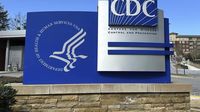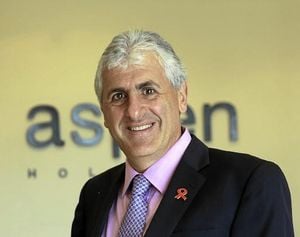ATLANTA (AP) — A new report from the U.S. Centers for Disease Control and Prevention (CDC) reveals that autism diagnoses among American children have surged, with one in every 31 children identified as having autism spectrum disorder (ASD) by age 8 in 2022. This marks an increase from the previous estimate of one in 36 in 2020, continuing a troubling trend that has raised concerns among health officials and families alike.
The CDC's findings, released on April 15, 2025, are based on data collected from 16 communities across 14 states and Puerto Rico. The report highlights that the rise in autism diagnoses is not necessarily indicative of an actual increase in the condition itself but rather reflects improvements in screening and diagnostic practices. Health and Human Services Secretary Robert F. Kennedy Jr. emphasized the dramatic nature of this increase, stating, "The autism epidemic has now reached a scale unprecedented in human history." He further expressed that the risks and costs associated with this crisis are far more threatening to the nation than COVID-19.
Historically, autism diagnoses were rare, with only one in 10,000 children being diagnosed in the early 1990s. The rate began to climb significantly in the early 2000s, reaching one in 150 children by 2000, one in 44 by 2018, and now, one in 31. The latest data reveals a notable disparity in autism prevalence among different demographic groups. The report indicated that autism diagnoses were consistently higher among Asian, Black, and Hispanic children compared to their White counterparts.
According to the CDC, the prevalence rates for autism in 2022 were 3.7% among Black children, 3.3% among Hispanic children, and 3.8% among Asian American children, compared to 2.8% for White children. Additionally, the data showed that boys are diagnosed with autism at a significantly higher rate than girls, with a ratio of 3.4 to 1 in 2022, down from 3.8 to 1 in 2020.
Despite the alarming statistics, experts caution against labeling the situation as an epidemic. Dr. Alex Kolevzon, a child and adolescent psychiatrist, stated, "We’re not seeing an epidemic with autism," emphasizing that the increase is likely due to better awareness and diagnostic criteria. Christopher Banks, president of the Autism Society of America, echoed this sentiment, arguing that framing autism as an epidemic perpetuates stigma and misinformation. He stated, "Claiming that autism is 'preventable' is not science-based and places unnecessary blame on people, parents, and families."
The CDC report also noted significant geographic variability in autism diagnoses, with rates ranging from about 1 in 19 children in certain areas of California to just under 1 in 103 in Laredo, Texas. This discrepancy is thought to be influenced by the availability of diagnostic services and the implementation of early detection programs.
California, for instance, has been proactive in training pediatricians to screen children for autism early, leading to higher diagnosis rates. Conversely, other regions with fewer resources have seen lower rates of identification. The report highlighted that better access to evaluations and services can lead to improved outcomes for children diagnosed with autism.
In response to the rising autism rates, Kennedy announced a "massive testing and research effort" aimed at uncovering the causes of autism. He has expressed a belief that environmental toxins may play a role in the increasing prevalence of autism, a claim that has been met with skepticism from many in the scientific community. Numerous studies have debunked the long-held myth that vaccines contribute to autism, yet Kennedy's administration has initiated a federal study to revisit this controversial topic.
Experts have pointed out that while genetics are believed to contribute significantly to autism risk—estimates suggest that up to 90% of autism cases may have a genetic basis—environmental factors are also being investigated. Factors such as air pollution, maternal health, and other potential environmental toxins are under scrutiny, but research in these areas remains inconclusive.
Dr. Kristin Sohl of the American Academy of Pediatrics noted that the increase in autism diagnoses reflects real progress in identifying children who need support. "When children are identified early, appropriate supports and services can be tailored to help them and their families thrive," she stated.
As the CDC continues to monitor autism prevalence, the current findings underscore the importance of comprehensive research and funding to better understand the complexities of autism. The report also serves as a reminder of the need for equitable access to diagnostic services across all communities.
In conclusion, while the rising rates of autism diagnoses may seem alarming, experts stress the significance of early identification and intervention. As awareness grows and diagnostic practices improve, it is essential to focus on supporting individuals with autism and their families rather than perpetuating stigma and misinformation.









